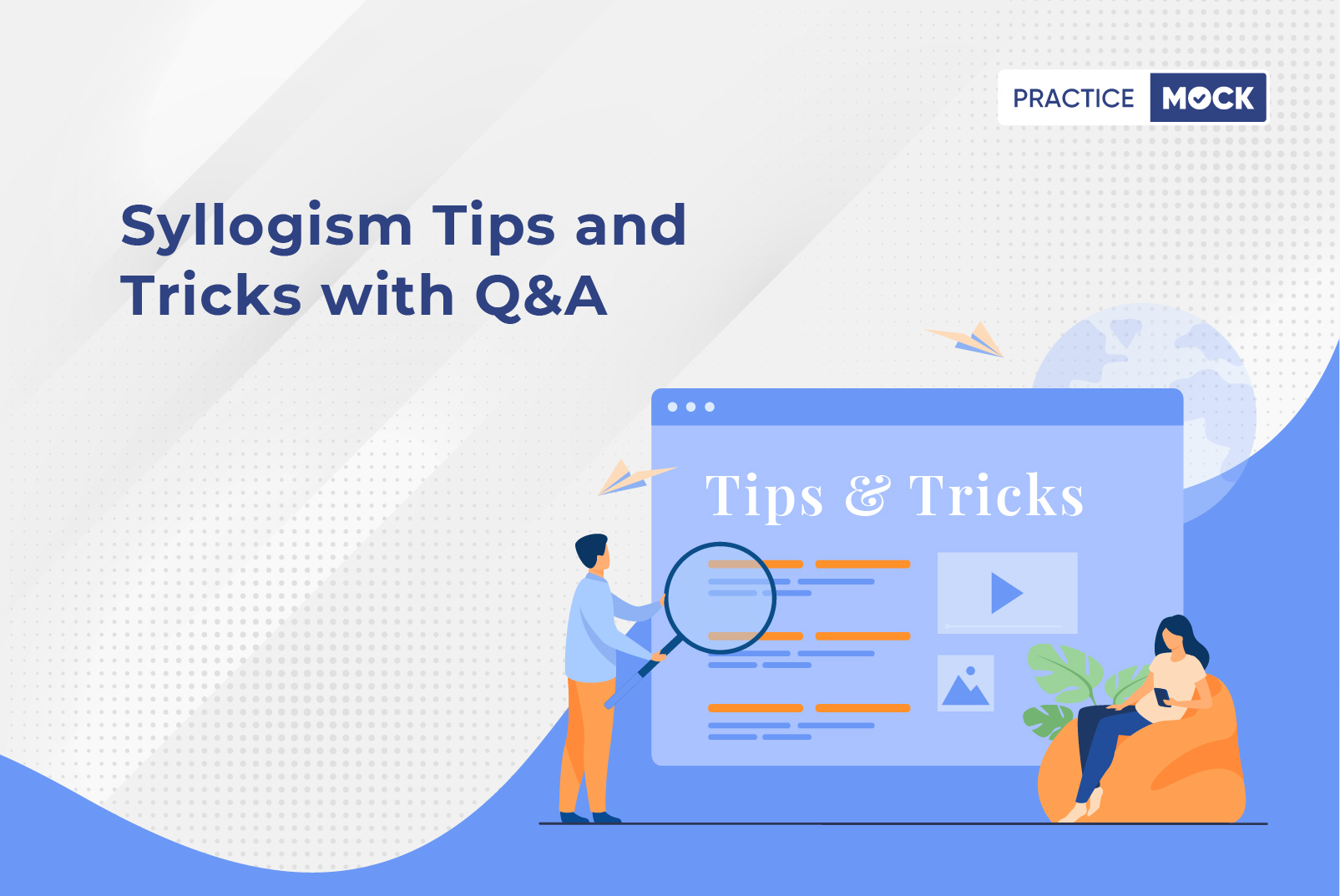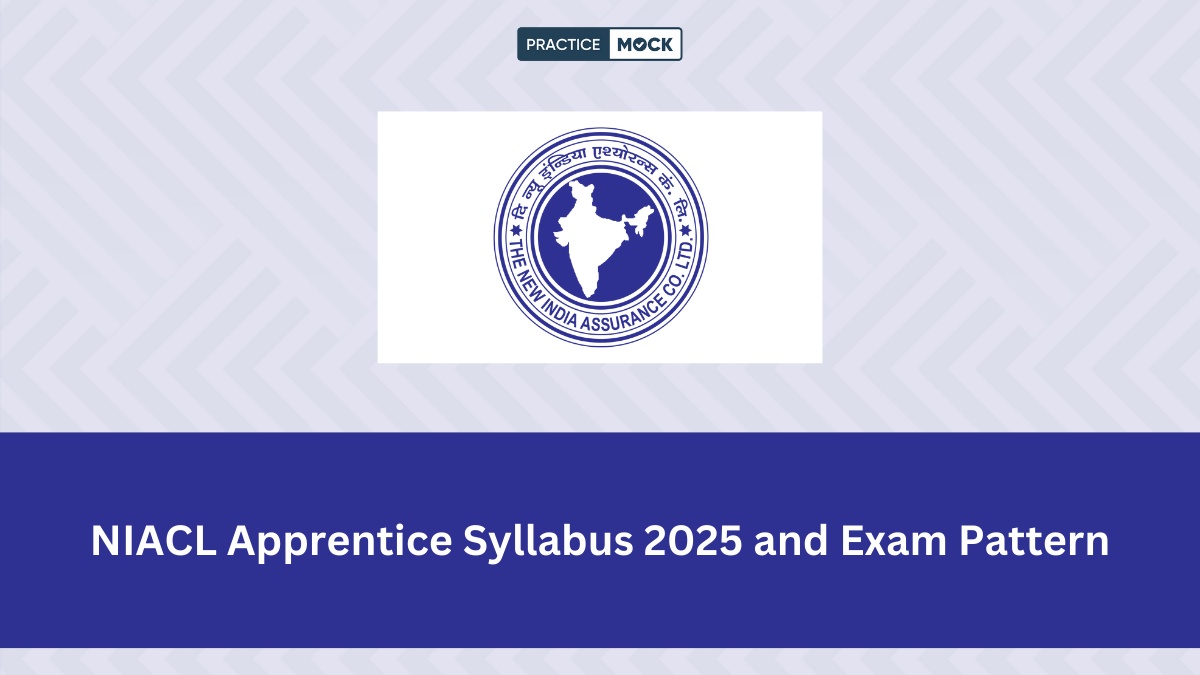Syllogism Tips and Tricks with Q&A


Syllogism Tips and Tricks: Syllogism questions might look easy but can be tricky. The questions of Syllogism does attract a lot of negative marking for the aspirants.


Types of Syllogism
Type 1: All A are B
Type 2: No A is B
Type 3: Some A are B
Type 4: Some A are not B
Conclusion Type:
Type 1: All A are B
Type 2: No A are B
Type 3: Some A are B
Type 4: Some A are not B
Type 5: All A are B is a possibilities
Type 6: All A are not B is a possibilities
Type 7: At least some A are B
Syllogism Tips and Tricks
They are basically logical arguments given to you for deductive reasoning. The aim is to reach to a conclusion by going through the arguments presented.
Example – ‘All humans are mortal; I am human; therefore I am mortal.’
The third statement derived is a conclusion or it’s basically truth or a fact derived from the first two statements.
Approach for solving syllogism questions:
- Read the statements carefully and without any bias.
- Follow the rules of syllogism to derive the right answer
- The best trick in the book is to use Venn diagramns to arrive at the correct answer or a conclusion.
Yes, there are pre-set rules for syllogism.
Syllogism Tips and Tricks – Rules of Syllogism
Rule 1- All A are B, as per this rule all the elements of the first are put inside the second element.
Rule 2- No A are B, this just shows that there is no relationship between the two elements
Rule 3- Some A are B, this implies that some of the elements of A are part of some of the element of B
Rule 4- Some A are not B, this implies that some of the elements of A are not B.
Practice questions for Syllogism with Answer Key
Question 1:
In the question below there are three statements followed by two conclusions I and II. You have to take the three given statements to be true even if they seem to be at variance from commonly known facts and then decide which of the given conclusions logically follows from the three statements disregarding commonly known facts.
Statements:
No questions are answers.
All answers are solutions.
No options are questions.
Conclusions:
I. A few questions may be solutions.
II. Some solutions being options is a possibility.
a. Only conclusion II follows
b. None of the above
c. Both conclusion I and conclusion II follow
d. Neither conclusion I nor conclusion II follows
e. Only conclusion I follows
Answer: c
Solution:
Following figure can be formed:
From the figure, both conclusion I and II follow.
Hence, option c.
Question 2:
In the question below there are three statements followed by two conclusions I and II. You have to take the three given statements to be true even if they seem to be at variance from commonly known facts and then decide which of the given conclusions logically follows from the three statements disregarding commonly known facts.
Statements:
No nails are fingers.
A few fingers are hairs.
All nails are hands.
Conclusions:
I. No hands are fingers.
II. A few hairs being hands is a possibility.
a. Both conclusion I and conclusion II follow
b. Only conclusion II follows
c. Only conclusion I follows
d. Neither conclusion I nor conclusion II follows
e. None of these
Answer: b
Solution:
Following figure can be formed:
From the figure, only conclusion II follows.
Hence, option b.
Question 3:
In the question below there are three statements followed by three conclusions I, II and III. You have to take the three given statements to be true even if they seem to be at variance from commonly known facts and then decide which of the given conclusions logically follows from the three statements disregarding commonly known facts.
Statements:
Only homes are houses.
Only few homes are huts.
Mostly huts are persons.
Conclusions:
I. All homes being huts is a possibility.
II. No persons are houses.
III. No persons are homes.
a. Only conclusion II follows
b. None of the above
c. Only conclusion III follows
d. Neither conclusion I nor conclusion II follows
e. Both conclusion II and conclusion III follow
Answer: a
Solution:
Following figure can be formed:
From the figure, only conclusion II follows.
Hence, option a.
Find daily banking current affairs 2021 updates posted on our official Instagram handle as well.
You might want to subscribe to our push notifications for such daily valuable articles.
Still, have some doubts about what we discussed in this blog? Then, leave your queries in the comment section below. We will surely respond to them.
Recent Posts
Double Pie Chart DI for RRB PO 2025, Check How to Solve 5 Questions set in 3 Minutes?
In this article we article we are providing the Double Pie Chart DI for RRB…
Order and Ranking for RRB PO 2025, Tips to Solve Problems
In this article we are providing the Order and Ranking for RRB PO 2025. Candidates…
SSC Stenographer 2025 Exam Preparation: Detailed Plan
This blog has provided the SSC Stenographer 2025 Exam Preparation. Candidates must go through the…
South Indian Bank Recruitment 2025 Notification Out, Check SIB Junior Officer, Syllabus, Exam Date (Expected)
South Indian Bank Recruitment 2025 Notification Out, check all details related to the recruitment, exam,…
NIACL Apprentice Recruitment 2025 Short Notification Out, Check Salary and Perks
The NIACL Apprentice Recruitment 2025 Short Notification has been released on their official website for…
SBI PO Mains Result 2025 Out, Check Clerk Result Expected Date
The SBI PO Mains Result 2025 has been released on their official website. Candidates can…



